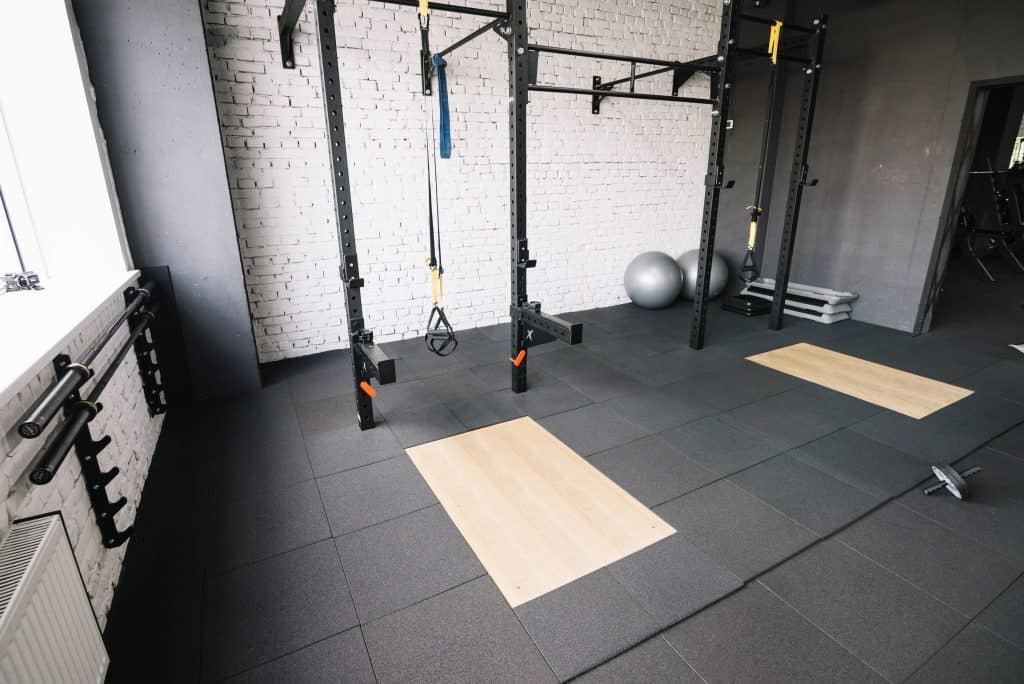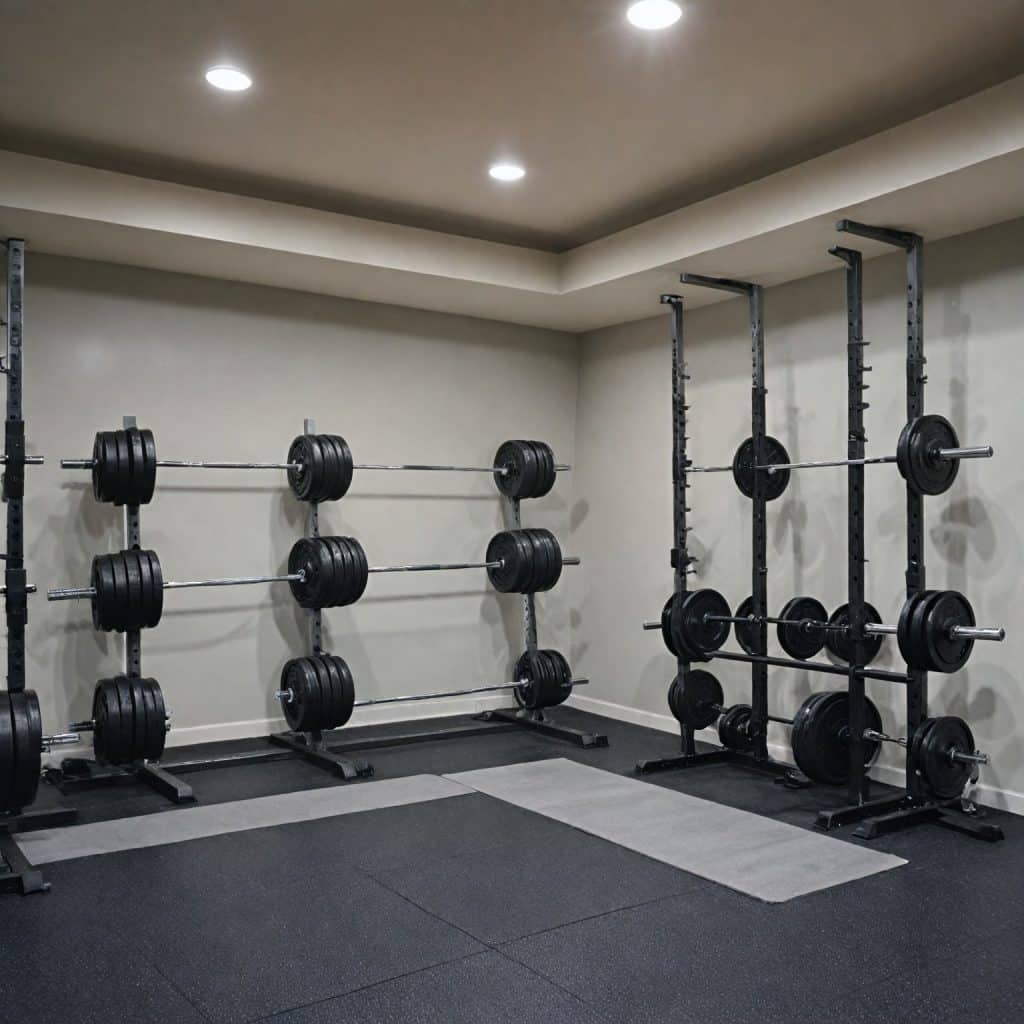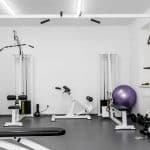Contents
- 1 Benefits of Crafting Your Own Basement Workout Space
- 2 Key Steps for Preparing Your Basement for a Gym Makeover
- 3 Waterproofing and Repair Essentials for a Durable Gym Foundation
- 4 Lighting and Ventilation Strategies for an Invigorating Workout Environment
- 5 Selecting the Right Gym Flooring and Equipment for Your Basement
- 6 Innovative Solutions for Space Maximization and Storage
- 7 Temperature and Moisture Control for Year-Round Comfort
- 8 Conclusion
- 9 Basement Gym FAQ
Transforming your idle basement through the basement underpinning in Hamilton into a home fitness hub can be a healthy way to boost your property and lifestyle. A basement gym offers the convenience of at-home workouts with the privacy and comfort that public gyms often lack.
With careful planning, this hub can cater to all your exercise needs without leaving the confines of your home. The key lies in maximizing the potential of every square foot for an efficient and motivating workout environment.
Despite common challenges, such as limited natural light and lower ceilings, a well-designed basement gym compensates by providing a dedicated area for health and wellness that is customizable to personal preferences. From selecting suitable equipment to considering ventilation, each decision contributes significantly towards creating an ideal setup for regular physical activity.
Benefits of Crafting Your Own Basement Workout Space
Having a basement gym means fitness is just steps away. This convenience eliminates travel time to a public gym. You can exercise whenever you want without worrying about operating hours or commuting.
A basement workout space offers unmatched accessibility. It’s open 24/7 for your use only. Whether it’s an early morning cardio session or a late-night lifting routine, your home gym accommodates any schedule.

Financial savings
Over time, investing in a home gym can lead to significant cost savings. Gym memberships often come with hefty monthly fees and annual contracts that add up.
By setting up your own gym, you avoid these recurring costs. After the initial setup expense, using your basement for workouts becomes virtually free. The money saved can be substantial when calculated over several years.
Personalization
Your basement can transform into an environment that motivates and inspires you to stay active:
- Select colours and decor that boost energy;
- Install sound systems for workout playlists;
- Choose flooring that supports high-intensity activities or heavy weights.
Customizing a workout area allows you to focus on personal fitness goals. You choose the equipment based on what suits you best rather than settling for the generic machines found at commercial gyms.
Key Steps for Preparing Your Basement for a Gym Makeover
Before diving into the transformation, it is vital to assess your basement’s condition. Look out for dampness, mold, or structural issues that could hinder your plans. Check if the space needs waterproofing or insulation improvements.
A thorough assessment prevents future complications. It also promises the safety and longevity of gym equipment. If necessary, ask for a FREE estimation to evaluate any concerns you may uncover during this initial step.
Space planning
Once you have determined that your basement is fit for renovation, planning the layout becomes essential. Consider the size of your basement and draft a floor plan that accommodates all intended equipment while allowing enough room for movement.
Think about where each piece will go and how much clearance is needed around it. For example, free weights require less space than a treadmill or a multi-gym machine.
Structural integrity
When installing heavy gym equipment in your basement, there is no arguing about proper assembly. Floors must be able to support weight without risk of damage.
If unsure about the load-bearing capacity of your floors, again seek advice from an expert before proceeding further with renovations.
Waterproofing and Repair Essentials for a Durable Gym Foundation
Waterproofing is vital. It prevents moisture damage. Basements are prone to dampness, which can harm equipment and structure.
Proper waterproofing keeps the area dry. This means a safe environment for workouts. It also protects gym investments from rust and mold.
To maintain this, regular checks are necessary. Inspect walls and floors for signs of leaks or condensation regularly.
Willfix waterproofing in Toronto treats basements as their own. They use top materials without overpricing clients. Their commitment guarantees quality results every time.
Lighting and Ventilation Strategies for an Invigorating Workout Environment
Natural light can boost energy levels. It’s vital in a basement gym setting. Consider installing egress windows or light wells to increase sunlight exposure. This not only enhances the workout vibe but also provides a safe exit route.
Basement gyms often lack direct sunlight, so positioning mirrors strategically can help reflect any available natural light, making the space feel more open and less like a typical basement.
Artificial lighting
Artificial lighting is a lifeline in a sea of lack of natural light. LED lights are popular due to their energy efficiency and bright output. They create an environment conducive to energetic workouts without adding excess heat.
Choose fixtures that provide even illumination across your gym area, avoiding shadows that might hinder exercise. The right colour temperature can make all the difference — cool white bulbs mimic daylight and may improve focus during workouts.
Airflow importance
Good ventilation maintains air quality, which is essential for health during intense exercise sessions. Stale air could lead to discomfort or even health issues over time.
Options include installing ceiling fans or exhaust systems specifically designed for basements where airflow is naturally limited compared to other areas of a home.
Temperature control
A combination of insulation techniques from earlier waterproofing efforts and smart thermostat settings will keep temperatures at optimal levels year-round without excessive energy use.

Selecting the Right Gym Flooring and Equipment for Your Basement
Choosing flooring for your basement gym is pivotal. It must be durable, easy to clean, and versatile. Rubber tiles or mats offer shock absorption suitable for lifting and high-impact workouts. Foam flooring provides cushioning but might not withstand heavy equipment.
Consider moisture resistance in a basement setting. Some materials combat mold growth better than others. Seamless vinyl could be an option, offering resilience and ease of maintenance.
Workout equipment
Select exercise equipment that aligns with your fitness goals. Space constraints will influence this choice as well. For weightlifting, investing in quality barbells and pound plates is wise.
Multi-purpose gear maximizes space efficiency in a basement workout room. Adjustable dumbbells or a wall-mounted rack system are examples of such versatility.
A balanced selection covers cardio machines, strength training apparatuses, and flexibility aids like yoga mats.
Innovative Solutions for Space Maximization and Storage
Basement gyms often face the challenge of limited floor space. An effective solution is to use vertical space. Wall-mounted storage solutions can transform how you store weights, bands, and other gym essentials.
By installing shelves or racks on walls, you free up valuable ground area. This approach not only maximizes the available space but also keeps your workout zone organized.
For instance, a simple set of sturdy hooks can hold resistance bands and jump ropes neatly aligned against the wall. Similarly, mounted weight racks provide a secure place for dumbbells and kettlebells. These systems promises that each piece of equipment has its designated spot, which simplifies cleanup after exercise sessions.
Foldable designs
Another key strategy involves choosing equipment with foldable or retractable designs. Many modern fitness devices are built to be space-efficient without compromising their utility. A foldable treadmill or a retractable squat rack can be tucked away when not in use, offering flexibility within your basement gym setup.
Consider a bench that folds flat against the wall or an all-in-one machine that collapses into a compact form factor; these options are perfect for smaller spaces where every inch counts. Not only do they save room but also make it easier to adapt the area for different types of workouts.
Organized clutter-free
Maintaining an organized environment is a fundamental aspect of setting up any home gym, but it becomes even more critical in basement spaces. Basements, due to their inherent design and location, often lack natural light and ventilation.
This can swiftly lead to a sense of clutter and congestion, making the space feel cramped and uninviting. It’s a scenario that can occur more rapidly than in other areas of your home that enjoy better lighting and air circulation.
The root cause of this issue often traces back to poor organization methods implemented during the initial setup process. Individuals who decide to create their own personal fitness retreats at home may not always consider the unique challenges basements present. They might be drawn by the appeal of having a dedicated fitness space within their residential property, whether owned or rented, instead of opting for traditional commercial alternatives.
However, without proper planning and organization from the get-go, these basement gyms can quickly become less functional and appealing. The key is to approach the setup process with an understanding of the limitations of basements and to employ organization strategies that mitigate these challenges.
This could involve strategic placement of equipment to maximize space usage, installing adequate artificial lighting, or incorporating ventilation solutions to keep the air fresh. In this way, individuals can successfully transform their basement into an efficient fitness retreat without succumbing to the common pitfalls associated with such spaces.
It’s all about understanding the unique dynamics of basements and adjusting your organization strategies accordingly for maximum functionality and comfort in your home gym.
To keep things tidy:
- Assign specific zones within your basement gym for cardio machines;
- Allocate separate areas for strength training;
- Use clear labeling systems on storage units so items are easy to find and return after use.
With this level of organization, you’ll be able to move more quickly from one exercise to the next, and you’ll boost your motivation levels throughout the duration of the workout.
Temperature and Moisture Control for Year-Round Comfort
As a famous fitness trainer said, maintain a comfortable temperature for effective workouts. Too hot, and you risk overheating; too cold, and your muscles may not warm up properly. Basement gyms benefit from natural insulation but still need attention to temperature control.
To keep the space comfortable year-round, install a reliable heating system for colder months. During warmer periods, fans or air conditioning can prevent the area from becoming stuffy. Regularly check thermostats to to make sure they’re reading the temperature correctly.
Moisture management
High humidity levels can make basement gyms feel uncomfortable and cause damage over time. Use dehumidifiers in humid summers to keep moisture at bay. This helps protect equipment from rust and prevents mold growth.
Air conditioners also reduce humidity while cooling the room. Choose options that suit your needs and budget best after gathering necessary information.
Conclusion
Creating a functional and inviting basement gym requires careful planning and attention to detail. From the initial steps of waterproofing and repairing your basement to selecting suitable flooring, lighting, and equipment, each aspect plays a pivotal role in crafting an environment that promotes health and well-being.
Basement Gym FAQ
-
Are there any aspects to consider when creating a basement gym?
There are many aspects to consider when creating a basement gym, from waterproofing and renovating the space to choosing flooring, lighting and equipment. It’s also important to pay attention to design and decor, temperature and humidity control to provide a comfortable and functional space for exercises.
-
Why can it be difficult to set up a home gym in your basement?
Problems can arise when creating a home gym in a basement due to inadequate ventilation, humidity, lighting, and the need for additional space heating.
-
What is the most comfortable temperature for a basement gym?
To keep your basement gym comfortable all year round, install a reliable heating system for the colder months and use fans or air conditioning during warmer periods. Check the thermostats regularly. -
How effectively use the limited space in your basement gym?
You can store your dumbbells, bands, and other equipment by using the vertical space in your basement gym with wall-mounted storage systems like shelves or racks.
